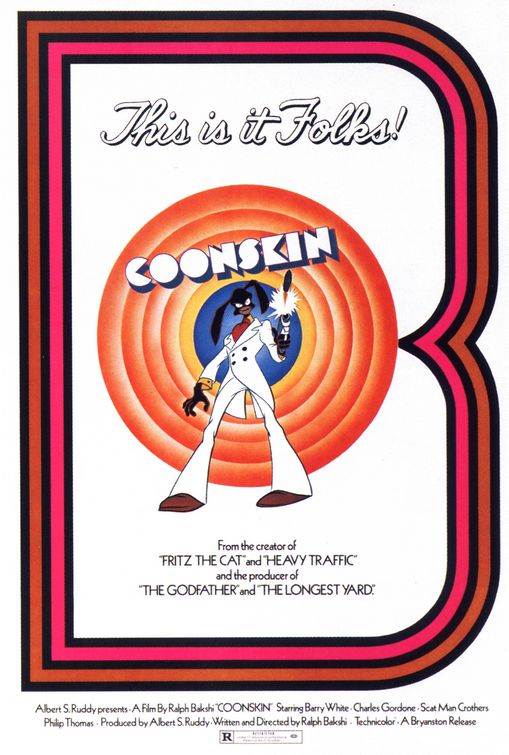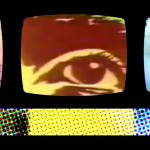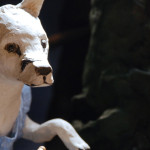CARTOONS IN THE CONCRETE SCHOOLYARD
CARTOONS IN THE CONCRETE SCHOOLYARD: AN INTERVIEW WITH LEGENDARY ANIMATOR RALPH BAKSHI
– Kier-La Janisse
There are very few giants of animation that the average man on the street knows by name; in animation, celebrity tends to be reserved for the viagra to order creation rather than the creator. But sometimes the conjurer’s vision is inseparable from his or her own personality, to the point where a film oozes with the identity of its maker. Ralph Bakshi – the director of such pioneering animated features as Fritz the Cat, Heavy Traffic, The Lord of the Rings, Wizards and (my favourite) American Pop – is one such auteur animator that has a thematically and visually identifiable style. He’s also the most successful independent animator in US history.
Bakshi’s last big screen animated effort was Cool World in 1992, and he’s been trying since then to get his feature Last Days of Coney Island off the ground. The script and its 8-minute demo film have gone through many hands, with a plethora of prospective developers and producers over the years who, for one reason or another haven’t followed through. It’s kind of shocking to me that with a pedigree like his, that Bakshi can’t just say “I want to make a new film” and have people lining up to work with him on it. But Bakshi has a bit of an enduring problem with the letters ‘PG’. And as long as producers keep demanding that these two letters follow the title of Bakshi’s as-yet-unfinished comeback film, we’re unlikely to see it completed. Still, we haven’t heard the last of him – he’s a feisty, fiery guy who – even at age 72 – emits balls-out creative energy like you wouldn’t believe.
Last days of Coney Island is about a New York detective who has a love/hate relationship with a prostitute and the other seedy characters who proliferate in the decrepit carnival borough. Like his films Fritz the Cat (based on R. Crumb’s comic but imbued with a flavour distinctly Bakshi-an) , Heavy Traffic, Coonskin, American Pop, Hey Good Lookin’, as well as his latest mixed-media painting exhibit The Streets, Last Days promises to be a somewhat elegiac revisiting of Bakshi’s old haunts.
Spectacular Optical had a quick chat with Bakshi about fighting cheap levitra buy online euro the death of animation in the late 60s with his own brand of controversial adult cartooning, and his unshakeable refusal to give up his artistic freedom through today.
———————
– When you first got into animation was it because of a pre-existing love for the art or was it motivated by a window of opportunity?
My parents were immigrants to America, and as I graduated from my high school industrial arts program I needed a job to help support the family, and college was for levitra schweiz smart rich kids, not lowly cartoonists. TV animation was starting and Terrytoons was hiring low-end people cel painting, polishing cels with a rag to get the dust off before camera – that was my first job. I wanted to be a comic strip artist – animation was a mystery to me.
– What was your mixed-media cheap cialis in usa style of animation influenced by?
A lot of my collage technique came from two sources: first, I have discount viagra cialis levitra online no money for backgrounds, I need it for full animation. How can I get backgrounds done? Well, photos that I took or live action that I ripped off or shot might work because I was striving for adult animation with more believability, and these techniques were one third the cost of painted backgrounds. On Fritz the Cat I had money for painting backgrounds but not drawing New York with its detail. Tracing photos, being on location on real streets was also better for adult animation – this was Times Square/ East Village. Having no money could make you really reach and score.

compare the streetscapes of Fritz the Cat (Left) w/ Bakshi’s current mixed media paintings THE STREETS

-Do you feel any connection to emerging animators – do you follow new animators at all?
All the animators I worked with from Terrytoons on are gone but what I see coming out of schools and on the internet is great. These new kids are using the new tools and are superb.
– When you first started making adult-oriented animated films, what was the response like from within the animation community?
Well, most hated me. They took ads in Variety when I came to L.A. with Fritz, signed by whomever that I was perverting the Disney image – and they never let up till the 90s.The guys that worked for me were the great MGM/Warners short animators who were also considered second-class to Disney’s bullshit boring feature animators. They were really, to my mind, purer, funnier and smarter – they were cartoonists, not illustrators. I really loved them, and they supported me against all odds.
– What was the animation industry like at the time?
The industry was dying. Short animation was through, TV animation was limited going overseas and Disney Studios was in the control of old men with old ideas swearing that they were the greatest because they ‘DID QUALITY’.
 – How did you feel when Robert Crumb disowned the Fritz the Cat film?
– How did you feel when Robert Crumb disowned the Fritz the Cat film?
He took the money and ran. At first I really cared, but I’m a director – I spent 24/7 on my movie, so many people worldwide loved it, so who cares what he thinks. And he never said anything about that Fritz Nine Lives garbage movie, just mine.
– Tell me about casting – for me, nothing tops the cast of American POP, in any animated film. What’s the difference in process between casting for rotoscoped actors and voice actors? How did you cast your four male leads in American POP?
I had a brilliant artist Louise Zigarrele help me cast – she worked on this film and Lord of the Rings. I had drawn rough sketches of the characters before casting and told her to find live people that come close and can act. She went through god knows how many and brought them to me to okay, at least three per character where they read for me and I made a choice. If she thought I was wrong she brought people back in for a second read.
– Was the retitling of Coonskin to Streetfight enforced because the original title was deemed too inflammatory? And although Coonskin was initially picketed – usually by people who hadn’t seen the film – what was the response of black audiences once they got to see it? Were audiences in general able to see the satire of race relations in the film?
 I never changed the title – various white executives who never saw a black man up close did. While the blacks in the theaters loved it, white audiences hid in fear of the unknown, swearing that blacks will not get it. You see, I’m hip, but them? Forget it. They’re not bright, and what’s worse, they’re lazy. But all the major black rappers love Coonskin, and every young black kid I’ve met or who has emailed me loves it, and Wax Poetics hip hop music magazine said it’s one of the great movies of all time and ran 8 color pages on it. And Quentin Tarantino quoted his love for the movie in my art book, so there. A Coonskin DVD is gonna be released by a major distributor of black films soon. I could go on but I won’t.
I never changed the title – various white executives who never saw a black man up close did. While the blacks in the theaters loved it, white audiences hid in fear of the unknown, swearing that blacks will not get it. You see, I’m hip, but them? Forget it. They’re not bright, and what’s worse, they’re lazy. But all the major black rappers love Coonskin, and every young black kid I’ve met or who has emailed me loves it, and Wax Poetics hip hop music magazine said it’s one of the great movies of all time and ran 8 color pages on it. And Quentin Tarantino quoted his love for the movie in my art book, so there. A Coonskin DVD is gonna be released by a major distributor of black films soon. I could go on but I won’t.
– I’ve heard you speak disparagingly about working on the 60s Spiderman series. What bothered you in particular about that project?
The TV deadlines, crazy. You could not change the script, and notes from the TV standards and practices department was like being in the movie Brazil. No money to make AGHHHHHHHHHHHHH…
– Although you’ve gone into a fantasy realm a few times with your films, many of the films are revisiting childhood impressions. This is something I struggle with myself – but do you think it’s okay for artists to keep mining one’s childhood for inspiration? Is this a refusal to grow up?
We are where we came from. Something went wrong and we are trying to find it to fix it. It’s also this search or need that made us creative in the first place – what’s more important than that?
– In what ways do you think your paintings relate to, or are an extension of, your animated films?
The desire to create without interference.
– How close has Last Days of Coney Island come to being made, and why has it never happened?
I’m trying to do Last Days now. I really want to animate again, but not for Hollywood. Just to be able to pay people and show it on my site or Youtube is enough. I’m raising money dollar by dollar. You should hear how the major Hollywood studios think Wizards is too dark, they told me so last week. And Last Days? They don’t do that kind of film, kid.
——————
Visit Ralph Bakshi’s website HERE.

 October 1, 2011
October 1, 2011  No Comments
No Comments









